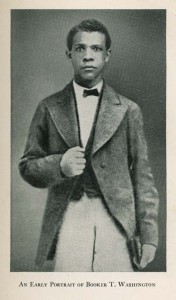Overview
The term “Reconstruction” has more than one meaning in American history. Usually it refers to the period from 1863 to 1877, as the federal government worked to “reconstruct” or “restore” former Confederate states back in the national system of political representation. This was a controversial effort that often pitted the major political parties and the federal branches against each other, but ultimately all of the former rebel states returned to their place within the union. During the 1870s, however, the idea of a reconstructed nation meant more than just a restoration of southern participation in the government. It also meant a reconstructed society, not only in the South but also in the North, one that now included free blacks and whites living and often voting together. That also proved controversial and quite difficult. When he was 16-years-old, former Virginia slave Booker T. Washington traveled over 500 miles, mostly by foot, in order to receive an education at the Hampton Institute, one of several schools established for the freed people during the era of Reconstruction. In chapter 3 of his memoir, Up From Slavery, Washington recounts his penniless arrival in Richmond on his way to Hampton. In one of the most memorable scenes in American literature, he describes how he “crept under the sidewalk” and slept outside on his first night, exhausted and hungry, but still hopeful that he could “reconstruct” his life with a real education. After much hard work, Washington succeeded, but he still acknowledged the challenges that loomed so large in the 1870s, such as what he called the “Ku Klux period,” which he considered, “the darkest part of the Reconstruction days.” Beyond race, there were also major disruptions and changes in American society during the 1870s involving the economy, landscape and society at large. Greed and corruption seemed rampant. Political and social tensions that had been held back somewhat during the Civil War now exploded into the public consciousness and for many defined a decade that was as fast-paced and turbulent as any in their lifetime. Mark Twain famously labeled this era, “The Gilded Age,” in his satirical “Tale of Today,” a novel written in 1873 with Charles Dudley Warner.
Online Textbook Resources
Reconstruction from Digital History (Mintz and McNeil)
Gilded Age from Digital History (Mintz and McNeil)
Selected Timelines
American Literature and Events: 1870s (Donna Campbell, Washington State)
1870s (Henry Ford Museum)
Featured Videos
Historian H.W. Brands offers an overview of the Gilded Age through profiles of three capitalists: John Rockefeller, Andrew Carnegie, and J.P. Morgan, in this hour-long videotaped lecture. Social studies teacher Tim Betts provides a somewhat shorter and snappier summary of the same information in a music video parody called “Robber Barons.”
